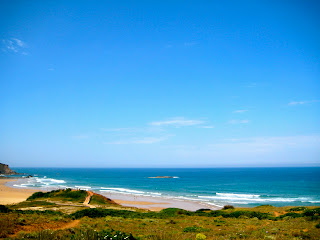The Prado Museum is a must-see for art lovers and connoisseurs in the city of Madrid. Being an art enthusiast really makes the experience much more enjoyable. It involves a lot of walking, stopping, staring and really taking in the art.
While I enjoyed most of the art, we took a deeper look at Andalusian painters and the following three were my favorites:
“Las Meninas”
Diego Velázquez, born in Sevilla in 1599, was probably one of the most incredible painters of his time.
This painting, also known as “The Family of Philip IV” was truly breathtaking in person. This piece is actually one of the paintings that I studied all throughout school in art appreciation classes and seeing it in real life was quite a treat. When you see it up close you can really take in all the details and it’s really interesting to see the different techniques used by the artist. The main focus of this painting is the little girl in the light colored dress, who is the Infanta Margarita. She is being attended to by two meninas; Maria Agustina Sarmiento de Soto Mayor, who is kneeling and Isabel de Velasco who is curtsying.
The way this scene was captured seems almost without warning because several figures in the piece don’t seem to be posing or are shown looking away or interacting with one another. To the bottom right of the painting there is a dwarf whose face is seemingly blurred out and small child nudging the dog with his foot. These characters faces are both blurred and lack detail in their faces.
The man holding the brush and palette is Diego Velazquez himself looking outward past the easel and I’m assuming there is a huge mirror in front of this entire scene. In the background one can also see a man standing by the doorway; he is Don Jose Nieto Velazquez and he is not rendered with much detail. Closer to the foreground is a woman who is the princesses’ chaperone and she is standing next to a man who is also blurred and not really identifiable.
_______________________________________________________________
“Agnus Dei”
Francisco de Zurbaran was born in Fuente de Cantos in 1598 and was known mainly for his religious pieces.
While this painting is probably one of the least intricate, it’s the one I liked the most. Its simplicity is what caught my eye. The subject is the absolute main focus of the piece and there is nothing else to distract you from it because the black background gives no reference to space. I love the detail of the sheep’s wool and how realistic the animal looks. This painting conveys a feeling of peace despite the fact that the sheep is tied up and probably dead. “Agnus Dei” means Lamb of God so this piece obviously has a religious meaning.
______________________________________________________________
“Cristo Muerto Sostenido Por Un Angel”
Alonso Cano was born in Granda in 1601 and was without a doubt one of the most well rounded artists of his time, showing tremendous skill in painting, designing, sculpting and architecture.
There’s something about this painting that really caught my attention. I really like the contrast of the skin of Christ— white and pale— and the angel that is holding him. Even though the light is almost in completely frontal angle, the angel seems to be in the shadows where the darkers hues make him look warmer and “alive” compared to the cold, lifeless body of Jesus. The warm colors of the sunset and the clouds in the background add another touch of warmth and tranquility. Other details that almost go unnoticed are the three nails and the golden bowl to clean the wounds, which I feel really make this a powerful piece that exudes a sense of sorrow and pain.



































